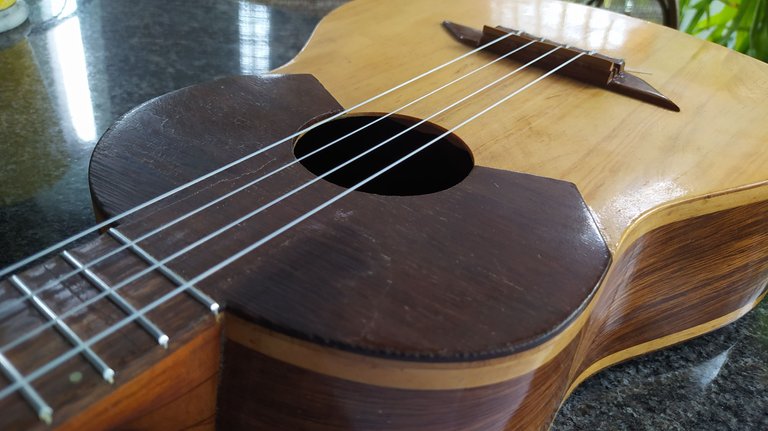

Two weeks ago, I had the chance to listen to a Japanese song arranged for Soloist Venezuelan Cuatro. It was played master luthier Yasuji D'Gucci, who besides making some of the most exquisite instruments, is a great musician. He's also a fan a Venezuelan music. He spent years in Caracas learning a lot about our music and how to make cuatros among other things.
I went full bold on this and shared his video and even asked for the tab for the piece. The time difference made it hard to keep track of the messsge, but he replied and shared the tab. I was ecstatic.
One thing is trying to play music from other places, but having someone arrange a song form another culture to the style of ours, it's something else.
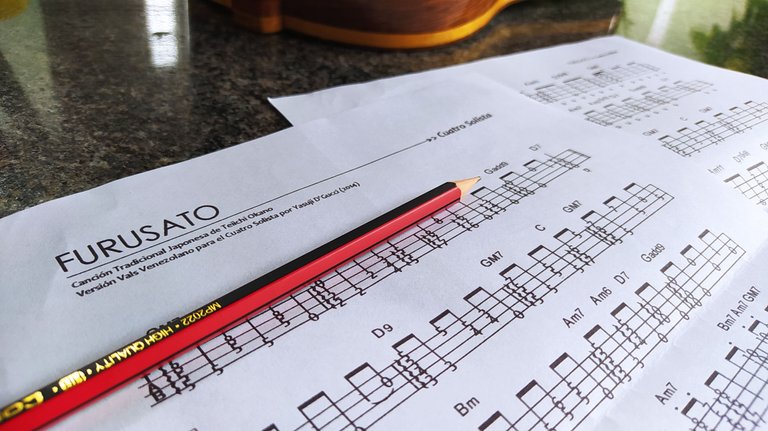
The name of the piece is Furusato. It's original version comes from Teiichi Okano. This version was arranged by Yasuji D'Gucci for Venezuelan Cuatro in 2014.
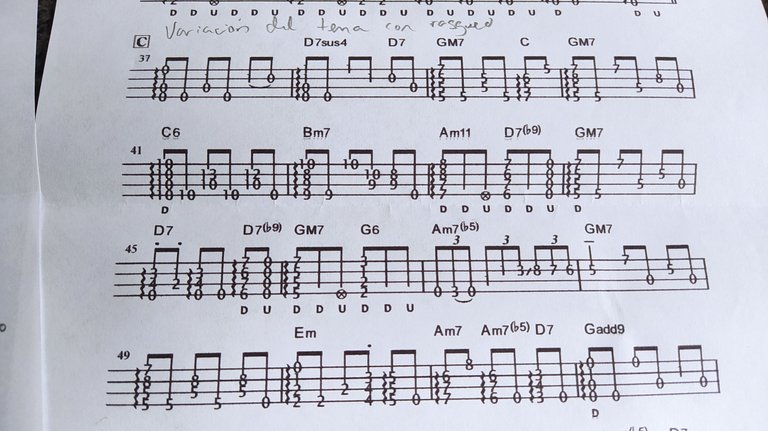
I gotta say that master Yasuji knows a thing or two about making tabs. If you are familiar with the standard guitar tabs, you might nor understand everything happening in this sheet. This system is a mix of standard notation and tab. On top of the numbers, you can see the lines that tell you about the rhythm of the notes. This gives you more information than just where to place your fingers. It's of course a tab made for people with some basic knowledge of music theory. But it goes even further given you chord names and some strumming references.
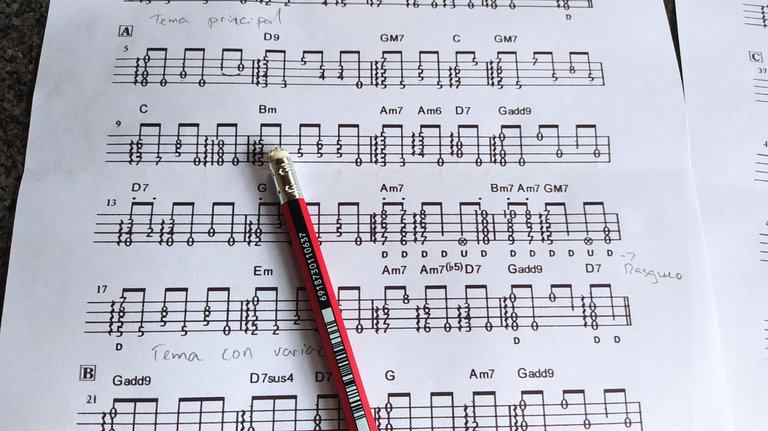
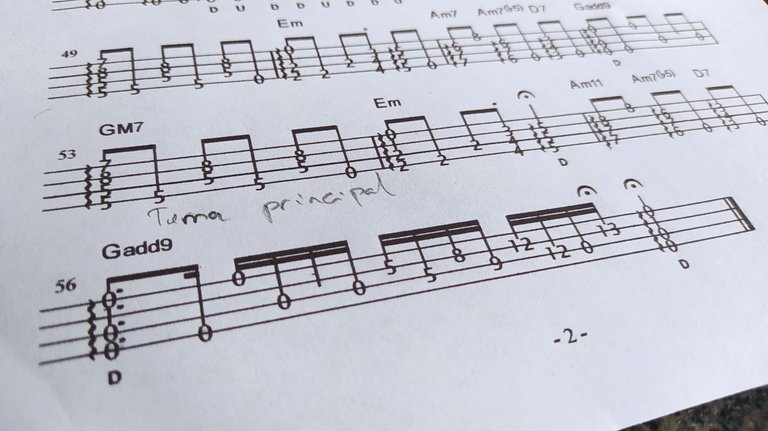
The first time I tried to play this, I couldn't wrap my head around the ideas. The system was new to me as I had never played with tabs. But as I gave it time to sink in, the whole patterns and phrases became clear. I also listened to the video reference a lot. And came back to some things I have learned from watching a lot of YouTube videos about music theory and how to study pieces.
So, the main idea was to divide the song in sections. There's always a main theme and that's the first thing I memorized and practice to get the fingering right. Then, got used to the right hand pattern. There are some extra things that are somewhat tough. Some jumps from third chord inversions to the first position are tricky in this piece.
But as I have been making my way through this piece, I have been able to understand the ideas underlying the song. Furusato is a Japanese word that roughly translates to "Motherland". I find it beautiful that Yasuji took this piece and made it into a Venezuelan waltz. He spent a lot of time living here and learning about our instruments and music, that he must have felt this country was his second motherland. And that idea is in this arrangement.
I haven't learned it fully yet. At least not at performing level, but I'll come to show it once I have got the gist of it. There's a second connection coming into play on this whole deal. We are both musicians and luthiers. So it certainly feels like there's a mutual understanding of some underlying themes about sharing and learning.
And that's one of the most inspiring things in the world.
Or so I believe.
Also, I love the fact that this tab tool my out of my comfort zone. If it was standard notation, I believe my progress would be near to zero. Reading chords in standard notation isn't easy (except if you're a pianist). So taking on the challenge of learning this has been quite fulfilling. I went with the sheet to my teacher and he just told me "ok, learn it". There was no indication or advice.
I took it as challenge or maybe he trusts enough in me that he doesn't need to tell me how or what to do with it.
Maybe once it's done, Yasuji will see my video and give me some feedback. That would be amazing too. For the time being those bars aren't going to learn themselves.

- Photos 📷: taken by me (Redmi Note 8)

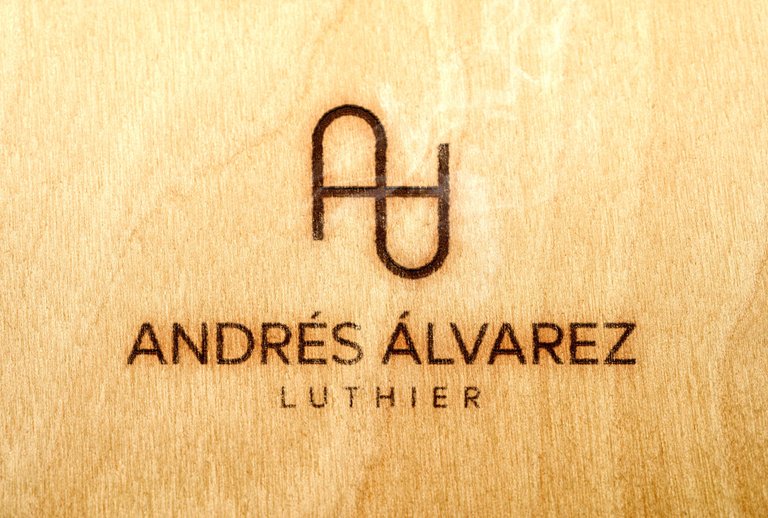
Follow me on Instagram for enquires and commission.
If you'd like to help the workshop grow, you can make a donation here. You can find me at discord as bertrayo#1763
